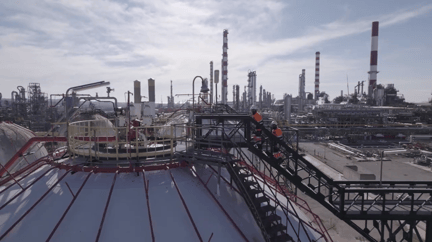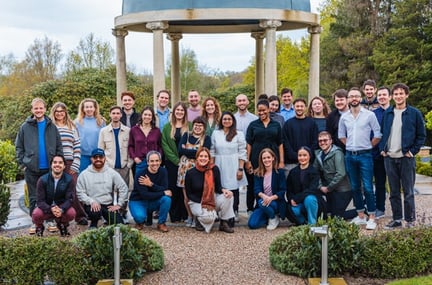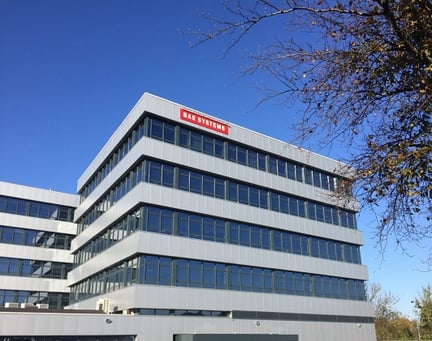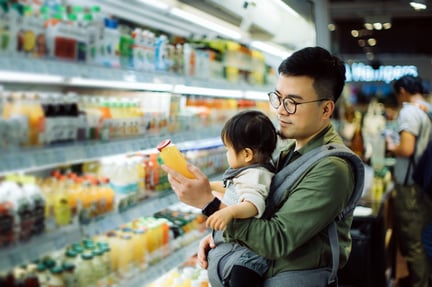Over the past two years, the HSES programme at LRQA has been undergoing a significant change. As part of this transformation, James has been considering how demographic changes will create new challenges for safety.
Rachel Corbett, Specialist Recruitment Consultant at Shirley Parsons met with James Pomeroy, Group Health, Safety, Environment and Security Director at LRQA, along with Shirley Parsons Director Shona Paterson, to explore the changes LRQA are making to engage with employees and the challenge of connecting with the forthcoming generation of workers.
Over the past two years, the HSES programme at LRQA has been undergoing a significant change. As part of this transformation, James has been considering how demographic changes will create new challenges for safety.
You have been promoting a progressive and future-centric approach to HSES at LRQA. Why is this next generation of the UK workforce of such interest?
‘LRQA is a historic organisation that has been around for over 250 years, but in recent years we’ve seen an increasingly rapid pace of change. This change has occurred because the environment we operate within is changing, as is the nature of our work. We are now seeing the deployment of remote technology to conduct inspections that previously required people to access hazardous environments, automation is increasingly being deployed, and 3D-printing and virtual reality are becoming commonplace. This is creating a new set of skills and our engineers may soon be able to conduct many of their hazardous tasks remotely – empiricism itself is changing. These developments represent a significant change for HSE. The hazard profile of our organisation will become very different requiring practitioners to develop new skill sets.
‘We will also need to consider how the workforce of the future will interact with these hazards: what shapes them as a generation and what are the best methods of engaging them to be safe at work? Millennials are already amongst us and the so-called “Gen Zs” will soon be in our workforce. We need to consider their needs and change our approach.’
In order to take into account the needs of ‘Millennials and Generation Z’, what would you say characterises them as workers?
‘This is a generation that has grown up in the digital revolution, and it has affected their understanding of, and exposure to, risk. It has also characterised the next generation of employees. Most obviously, they are significant users of digital technology and social media, but there’s more to it than that and it’s worth reflecting on why.
‘The Gen Zs and Millennials have had much busier childhoods and been raised in more plural family settings, where they have learnt to be more assertive to receive attention. Consequently, as employees, they require different forms of engagement and attention from employers. Generally, they thrive in collaborative relationships, particularly where they are consulted and engaged. This is a consequence of the teaching styles they have received, where students have been encouraged to work in groups, and critically evaluate and engage in their learning. Their familiarity with technology also means that they interpret and process information quickly and respond best to visual forms of learning.
Millennials and Generation Z are smarter, safer, more mature and want to make the world a better place…but on their terms
‘They also have different expectations and ways of working, where the principles and social purpose of their employer matters. They also place more emphasis on individualism versus collectivism. This change of emphasis is relevant in a number of ways – not only will these next generations challenge traditional hierarchical HSE systems, but they will also prioritise social relationships over formal authorities. The next generations have been encouraged to think independently and challenge preconceptions. It’s very positive that this generation is conscious of the environmental impact they make, and many are tuned in to their own health and mental wellbeing. In summary, Millennials and Generation Z are smarter, safer, more mature and want to make the world a better place…but on their terms.’
How will HSES practices and policies have to adapt in order to resonate with this transforming workforce?
‘At LRQA, it’s important that our HSE programmes are inclusive and resonate with our changing workforce, and we’re seeking to do this in a number of ways. Firstly, we are embracing clearer, simpler and more evidence-based processes.
‘We’re also moving away from traditional hierarchical approaches to HSE towards greater collaboration and engagement. Millennials and Gen Zs engage most effectively when they are given a voice to ask questions, and have the opportunity to independently form and express substantiated opinions. This gives them ownership of, and confidence in, taking the safest, most efficient course of action. This level of ownership will also, more likely, ensure positive behaviours become embedded in the longer term.
‘We use social media across the business as a platform to give employees a voice. Posting safety questions, images or stories stimulates lots of productive discussion. This form of engagement enables us to place HSE at the forefront of everyone’s thinking. It’s also an essential part of sharing our experiences and expertise. Ultimately, by using a more immediate and connective medium, we are trying to invert the traditional processes of safety that are typically top-down, slow, bureaucratic and instructive.
Do the next generation have a different perception of HSES risk?
‘There have been a number of studies demonstrating that Millennials and Gen Zs are more risk-averse. This is perhaps due to greater exposure media from a younger age, but also because much of their upbringing has been in managed environments. Their perception of risk is also heavily influenced by the media and their peer groups.
‘This is also a generation that often sees little distinction between work and personal life, and this is excellent news for practitioners developing safety strategies around home working or sustainability. Millennials and Gen Zs will consume less alcohol and have lower levels of teen pregnancy. Fewer are learning to drive and, when they do travel by road, they are more inclined to wear seatbelts. However, this aversion to risk only occurs when there is evidence to demonstrate the consequences are dangerous. Therefore, arbitrary and authoritarian rules that do not demonstrate a negative outcome will inevitably be challenged.’
What defines this new generation as HSES learners and how can HSES professionals use this to their advantage?
‘Millennials and Gen Z grew up in a fast-paced, tech-driven world and often have shorter attention spans. They also expect HSE materials to have similar levels of quality from that which they see online. It is therefore important that HSE training and campaigns are engaging, interesting and relevant. Studies also show that job tenure of Millennials tends to be shorter. Not only does training need to be concise and impactful, it also needs to be faster to counter the higher turnover.
‘HSE professionals are able to use all of these factors to their advantage. The new generation of employees will be highly proficient self-learners and used to learning visually, meaning we are able to reduce systems and procedures and increase our output of media. It is important to be tech savvy – using all of the interactive tools at our disposal. We’re trying to embrace this through much greater use of video tutorials. We’re also encouraging employees to record their safety experiences through using their phones in a campaign called ‘My Safety Story’. Employees from all areas of the business can create short videos detailing a ‘safety moment’. As these videos are effectively ‘home-made’, they are emotive, accessible and credible. The next generation are particularly receptive to this type of communication, as they themselves have the opportunity to contribute to the material. Behavioural science also tells us that employees are often more influenced by their peer group and through storytelling, so encouraging colleagues to share their experiences is a great way of nudging behaviour. The videos are a constant reinforcement of positive behaviours and detail when things go right as well as wrong, meaning they are evidence-based, proportionate and relevant.’
Will this changing demographic in the workplace impact competencies and skills required of HSES professionals across the board?
‘HSE professionals must inevitably build upon their existing skillset in order to reach this wider audience. Improved softer skills are required to facilitate constructive conversations and to help HSE professionals to connect on a more emotional level with their workforce.
‘We must have the confidence to embrace change in our ways of working and to keep an open mind when it comes to supporting innovation, creativity and lateral thinking. It’s important that HSE professionals explore how people make decisions and this is truly reflected in their practices. At a very basic level, we all need to focus on the employee when creating HSES materials and engage them in the process – the days of unwieldy top-down procedures and boring PowerPoint training must come to an end.’











